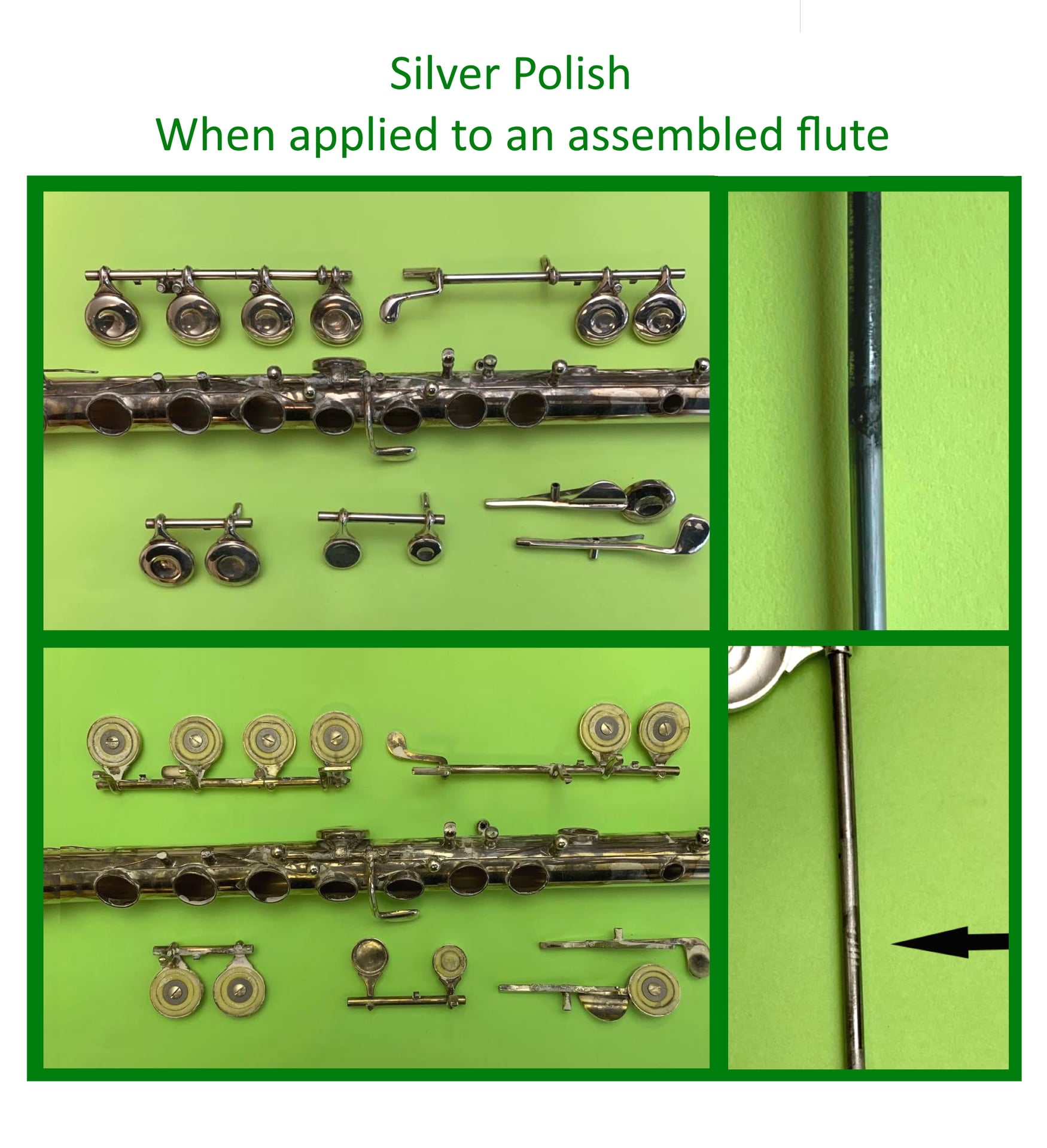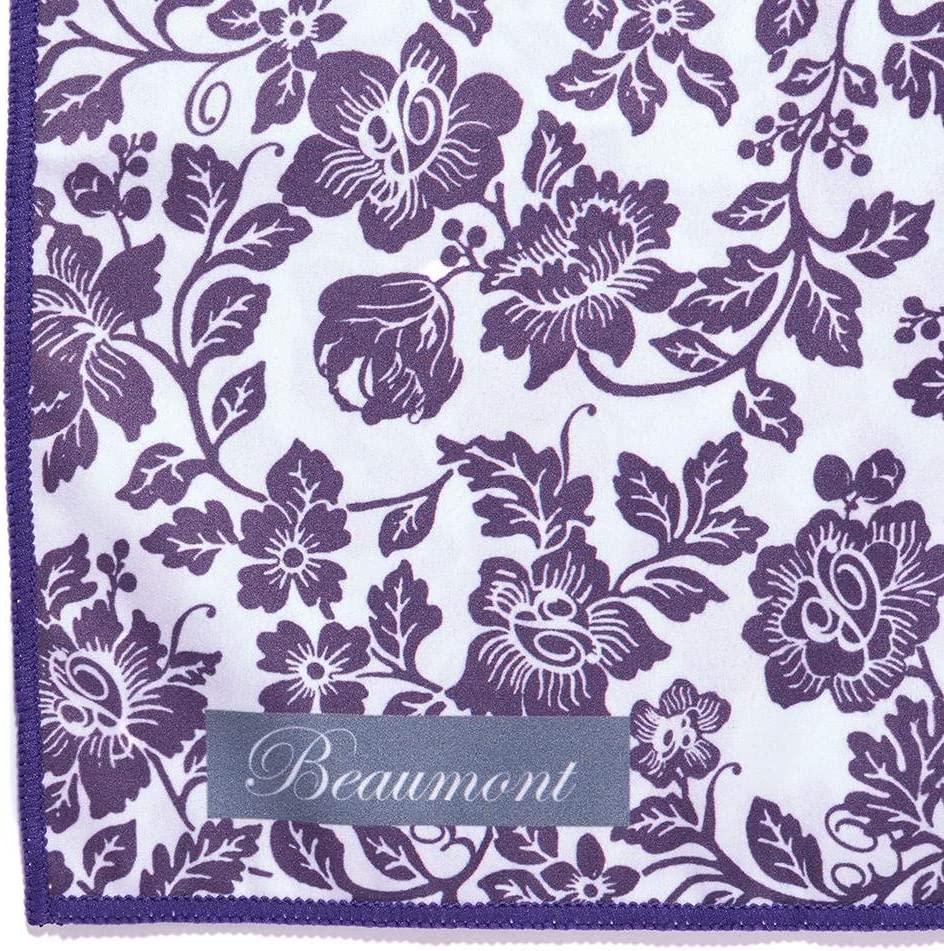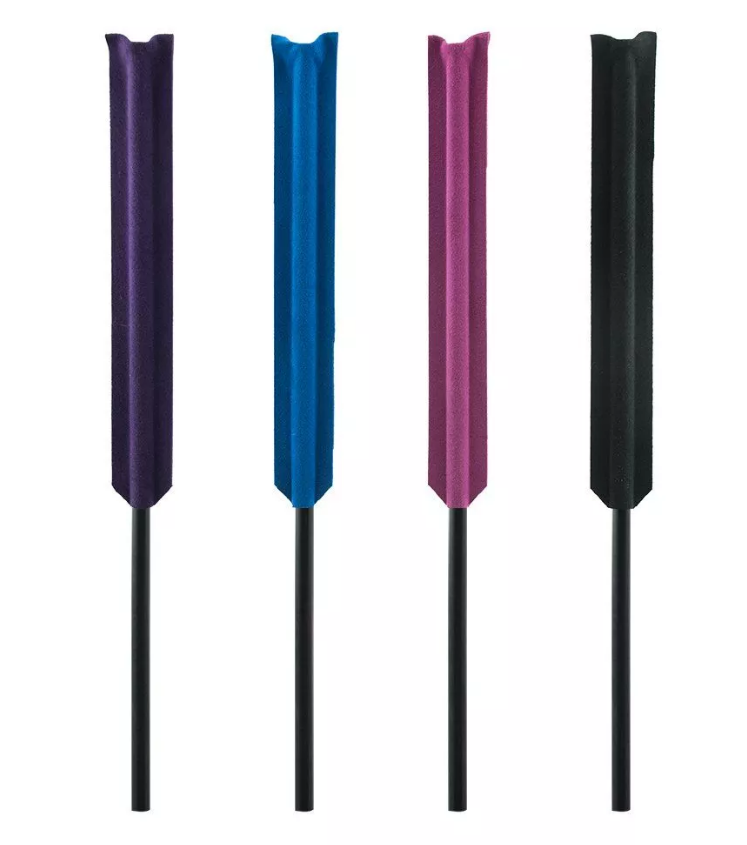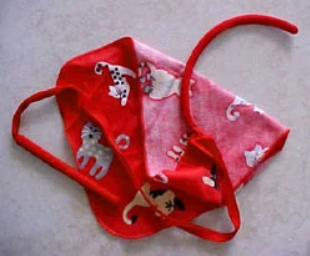- Top Trumpet Embouchure Techniques: Options for Beginners Through Professionals - October 12, 2022
- Is the Trumpet Hard to Learn? - September 30, 2022
- Best Leblanc Clarinet Models Guide: From Soprano to Contrabass - September 5, 2022
Are you tired of your flute leaking spit when you pull it out of the case? I’d love to explain how to clean a flute so that you can keep that from happening.
I’ve played the flute for over a decade and have cleaned my flutes and piccolos thousands of times. The right steps have allowed me to keep my flutes in good shape between visits to my flute technician.
I know of one player who hardly cleans their flute, and I can’t imagine doing that. It only takes a couple of minutes to clean your flute after a practice session, and you can save a lot of time and money on professional repairs.
Bottom Line Up Front: To clean a flute, use a Beaumont flute swab to remove condensation from the inside. Follow it up with a Beaumont polishing cloth to remove your fingerprints.
How to Clean a Flute
After you finish a productive practice session, rehearsal, or concert, you have to put your flute away. Sure, you might already know to take the flute apart without pressing the keys so that they don’t bend.
You can put the flute in its case, but don’t close the case just yet. Every flute player should know how to clean a flute because doing so can keep your flute in good condition for longer.
Here are my favorite tips for how to clean your flute when you finish playing it.
Swab the Inside
The first thing I do when cleaning my flute is I swab the inside of it. Most flutes come with a cleaning rod, so you shouldn’t have to get that.
But you will need to purchase a flute swab that you’ll feed through the hole in your cleaning rod. Then, take each part of the flute individually and slide the swab and rod through it.
I also sometimes use a flute wand in my headjoint to reach the corners. The flute swab isn’t as broad at the top, so you can miss a bit of condensation and spit.


Wipe the Exterior
I’ll admit I’m not the best at this and don’t do it all of the time. However, you should also wipe the outside of your flute with a polishing cloth.
In most cases, you don’t want to use a special silver polish cloth. A microfiber cloth or a cotton cloth can work well to help remove the fingerprints from the outside of your flute.
If you let fingerprints build up too much, the flute could look very dirty. I also think not cleaning the outside is what caused my now-backup flute to develop pits in the silver plating of the body.
Add Anti-Tarnish Strips
Another thing you can do to help keep your flute clean is to place anti-tarnish strips in your case. I did this with my backup flute, and I think it helped reduce tarnish a bit.
Now my main flute has complete rose gold plating, so tarnish isn’t an issue. But my backup flute has tarnished, and while a tech can remove that, it’s good to prevent tarnish when you can.
Take It to a Technician
Every year or so, you might want to take your flute to a flute or woodwind technician. The tech can take off the keys and rods, so they can give the flute a more detailed bath.
Your tech should be able to remove tarnish that’s built up on your flute. They can also use other special materials to give it a deeper clean than you can at home.
What Not to Do to Clean Your Flute
Following the right steps to clean your flute is important. However, I’ve seen and heard of quite a few myths or misconceptions about ways to clean your instrument.
Over the decade or so that I’ve played the flute, it seems like I’ve seen it all. If you want to make sure your flute stays in good condition, you should know about the following things that you shouldn’t do.
Don’t Force a Swab Through
When you’re swabbing the inside of your flute, you may be tempted to push the swab. However, if it doesn’t slide through smoothly, something is wrong.
If you try to push it through, it could just get stuck. I haven’t had this happen with my flute, but it did happen to me when I played the clarinet.
Don’t push it through, so try to pull it out from where you first put the swab in. Make sure you feed the corner of the swab into the rod, and try to flatten the rest of the material around the rod so that it’s small enough to go through your flute.
Avoid Pad Savers
In the first few years I played the flute, I used a pad saver, which is a fuzzy thing that fits in the body of the instrument. As the name suggests, you might think it can protect your pads as you let your flute sit in the case.
However, it can actually do the opposite. The fuzz from the pad saver can come off, and it can get into the pads and the mechanism of the flute.
If that happens, you might need to pay a lot for repairs and to replace the damaged flute pads. As long as you swab the inside before you put the flute away, it should be fine.
Use Liquids Sometimes
I’ve seen people ask about using oil or alcohol on their flutes. Alcohol is fine to use if you have an all-metal headjoint and you only use it on the headjoint.
You can use alcohol to clean a headjoint if you need to share your flute with someone. But keep it far away from the body because the alcohol could damage the mechanism.
Now, if you have a wood headjoint, I’d recommend using oil on it every few months to keep the wood from drying out. Again, don’t use oil near the body unless you’re a technician and have experience working on wood flutes.
Keep Silver Polish Away
Another type of liquid you may wonder if you can use is silver polish. However, I recently saw a post from a woodwind repair technician that showed the dangers of using it.
She shared what the polish did to the underside of the keys. As a player and not a tech, you can’t get the polish off from those sections as easily as from the top of the keys.
Just avoid the issue for yourself, and don’t buy any liquid silver polish. If you need to polish the silver, use a soft cloth, or take it to a professional to polish the flute for you.
Never Give Your Flute a Bath
If your flute is really tarnished or dirty, you might want to give it a bath. But just like the other issues I’ve shared, you should never put your flute anywhere near water when the keys are on it.
The water can affect the pads and keep them from sealing properly. Sure, your flute tech might give your instrument a bath, but they probably take the keys off beforehand.
They also have special tools to use to give your flute a suitable cleaning. I wouldn’t even recommend washing your headjoint because there’s a cork inside, and water can seep into the cork and affect the tuning of your flute.
Just don’t do it.
Special Considerations for Piccolos and Low Flutes
Along with the regular flute, I’ve played the piccolo for about eight years. I first played the alto and bass flutes almost seven years ago.
In that time, I’ve learned that what works for cleaning a C flute might not always apply to other members of the flute family. I love playing all of the flutes, but you can’t care for them the same way.
Here are a few things to think about if you want to play other flutes.
Keep Alcohol Away From Wood
I mentioned this already, but it applies to wood flutes and wood piccolos. Never use alcohol to disinfect the headjoints or bodies of your wooden instruments.
Alcohol can dry out the wood, so you’d just need to use more oil to counteract that. Instead, let the headjoint sit for a while between you using it and giving it to someone else to borrow.
You can also use a soft cleaning cloth to wipe off the headjoint if you can’t wait to use it. Or better yet, try not to share wood instruments if you can avoid it.
Use Cork Grease
While cork grease doesn’t clean your piccolo, it’s an essential step in piccolo maintenance. A lot of piccolo models have a piece of cork on the tenon of the body.
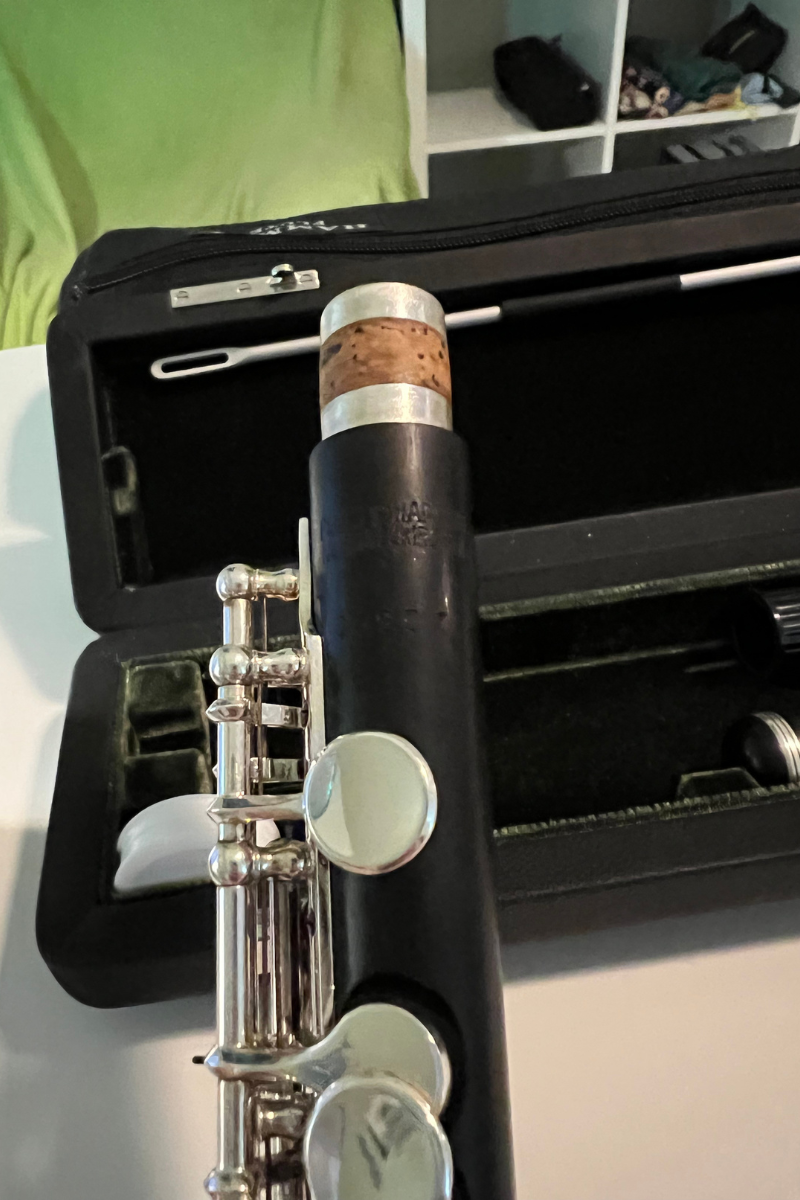
If yours does, you should use cork grease whenever you feel like the cork is drying out. This will help you smoothly assemble and disassemble the instrument.
Of course, if you have a wood flute with a cork, you can use cork grease on it as well. But don’t use cork grease on the tenons of any flutes that don’t have cork because that can just attract dust and make any issues you have worse.
Get a Flexible Swab
Since I play an alto flute with a straight headjoint, I can use the standard swab that came with it. But if you play an alto with a curved head or if you play a bass flute, that’s not the case.
You’ll want to get a more flexible swab that you can feed through the headjoint’s curved design. I’ve heard of people using swabs for bass clarinets or for oboes.
However, you can also find swabs for alto and bass flutes. That way, you’ll be able to swab out the inside of your headjoint just like if it were a C flute.
Best Flute Cleaning and Care Supplies
To help you take advantage of my top flute cleaning tips, you need some supplies. When you buy a flute, you may get some things, such as a cleaning rod.
My piccolos have also all come with cork grease. However, you might want to buy supplies separately because flutes don’t come with everything you need.
And even if they do, the included supplies aren’t always of the best quality. I chose some supplies that I currently use or have used in the past, with the one exception of the low flute swabs.
Here are some supplies you can look into for your flutes.
Beaumont Flute Swab

Every time I take apart my flute, I swab it out with the Beaumont Flute Swab. The company makes the swab in a variety of patterns, and I have and love the Sweet Magnolia pattern.
I’ll feed a corner through the hole on my flute cleaning rod and fold the cloth over to cover the rod. I like the bamboo because it can soak up a lot of condensation.
The material is also thicker than silk, which a lot of cheap cloths use. If you don’t like white and purple, you can choose from a few other patterns.
Pros
- Multiple patterns available
- Soaks up condensation well
- Easy to use
- Lasts a long time
Cons
- Not the cheapest option
Beaumont Polishing Cloth
For the outside of your flute, I recommend using the Beaumont Polishing Cloth. I have the Damson Lace pattern, so it goes great with the Sweet Magnolia swab.
The microfiber cloth is very soft, so it shouldn’t scratch the outside of your flute. It’s a nice size, so it doesn’t take up a ton of room in your flute bag or case cover.
I love the quality, and it’s easy to use to quickly wipe down the instrument. Plus, it’s suitable for clarinets, saxes, and other instruments if you also play those.
Pros
- Easy to use
- Fun patterns
- Soft
- Good size
- Perfect for doublers
Cons
- Not the exact same patterns as the flute swabs
Valentino Flute and Piccolo Wands
If you want to reach all of the corners of your flute, consider the Valentino Flute Wand. You can use it like any other swab, but the design allows it to clean out more of the headjoint.
It also comes in different colors, including black, blue, pink, and purple. I have the purple wand, and my flute tech sold it to me with a special attachment she had made so that I can swab out my entire flute without disassembling it.
If you want the wand with the attachment, contact Judi from Judi’s Woodwind Shop to ask about it. From what I can tell, other sellers don’t offer the attachment.
The Valentino Piccolo Wand has a similar design and the same color options, but it’s for the piccolo. I use the piccolo wand as my main piccolo swab, and I love that I can swab it quickly without having to retune my instrument.
Pros
- Easy to use
- Great for quick swabs during rehearsals
- Cute colors
- Lasts a long time
Cons
- Relatively expensive
- Flute attachment isn’t available everywhere
Anti-Tarnish Strips
Another cleaning tool that I’d recommend to anyone with a silver flute is anti-tarnish strips. You can get a pack of multiple strips for pretty cheap, and each one lasts for like six months.
If you get larger strips, you can cut them down to fit into the crevices of your flute case. I placed mine under the body, and that kept the strips out of the way when taking the flute in and out of the case.
As I mentioned earlier, I no longer use the strips since my flute doesn’t have any exposed silver. However, they’re a good way to keep tarnish from getting worse if you can’t take your flute to a tech right away.
Pros
- Easy to use
- Different sizes
- Lasts a while
- Good for silver and silver-plated flutes
Cons
- Not for gold or platinum flutes
- Might not completely prevent tarnish
Almond Oil
If you have a wood flute or piccolo headjoint, you should get some almond oil. I bought some and have used a bit on my piccolo headjoint to keep the wood from drying out and cracking.
After the headjoint cracked last year, I’ve done what I can to prevent that from happening again. You don’t need to use a ton of almond oil, but you will need to let the headjoint sit undisturbed for a while.
Using the oil is a good option to keep from having to take your piccolo to a tech. But you can keep the wood in good condition throughout the year.
If you’re allergic to almonds, I believe you can use avocado oil instead.
Pros
- Easy to use
- You don’t need much
- Helps keep the wood from drying
- Might avoid cracks
Cons
- Not for beginners
- Requires special care
Alto and Bass Flute Swabs
If you want to make cleaning your alto or bass flute easy, you need the right swab. I don’t think you need one for a straight headjoint, but curved head alto players will want the Flexible Curved Head Alto Flute Swab.
You can pull the swab through the curve of your headjoint to remove any condensation inside. It’s also suitable for the body, and it has a cute pattern.
There’s also a Flexible Bass Flute Swab with a similar design. You can use it for the headjoint and the body, and you don’t need to use a cleaning rod with it.
Pros
- Works with curved headjoints
- Easy to use
- Colorful design
- No cleaning rod necessary
Cons
- A bit expensive
FAQs about How to Clean a Flute
Answer: You need to clean your flute to keep it in good playing condition. If you don’t saliva and condensation can build up inside, and that can then affect the pads, which can keep the keys from sealing properly.
Cleaning the outside is also important for getting rid of fingerprints and other debris that may collect. Plus, who doesn’t like a shiny flute?
Answer: I recommend keeping your flute cleaning supplies in the case cover that came with your flute. If you have a student model with a hard case, you can get a small bag to carry with your flute case.
Using myself as an example, I keep the swab and rod in the outside pocket. The polishing cloth goes in the cover underneath my flute case.


Answer: You should have a professional clean your flute and do a COA (clean, oil, and adjust) about once a year. If you play a lot, you might want a COA every six to nine months.
On the other hand, if you hardly play, you can go about a year and a half or two years between professional COAs. Just make sure you do take your flute in regularly.
Answer: I found the two flute techs I’ve worked with through private teachers. However, you can also ask other players you know in your area if there are technicians they recommend.
Sadly, you might need to ship your flute to a professional if you don’t live close to someone good. A lot of people do that, and it can be safe and more convenient than driving multiple hours away.
Final Note on How to Clean a Flute
Whether you’re a beginner or on track to be the next Sir James Galway, you need to know how to clean a flute. Sure, you can take your instrument to a professional.
But that will get expensive, and the right DIY cleaning steps can make your flute last longer between COAs. I’d recommend getting a good swab and a polishing cloth to clean the inside and outside of your flute, respectively.
Looking for more interesting readings? Check out:



